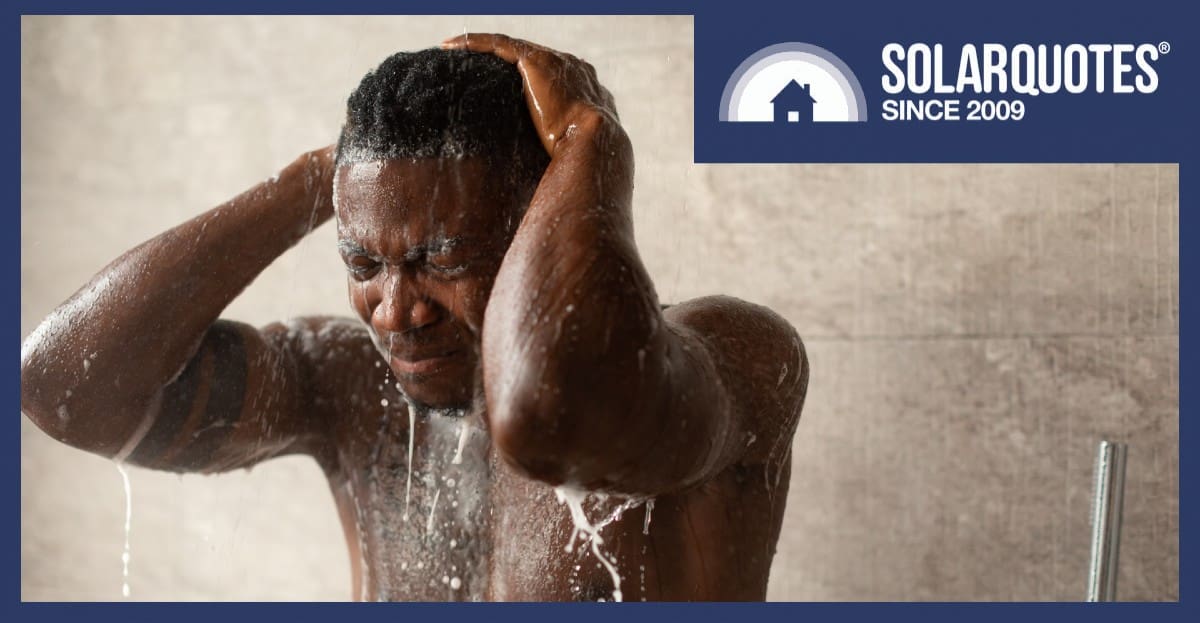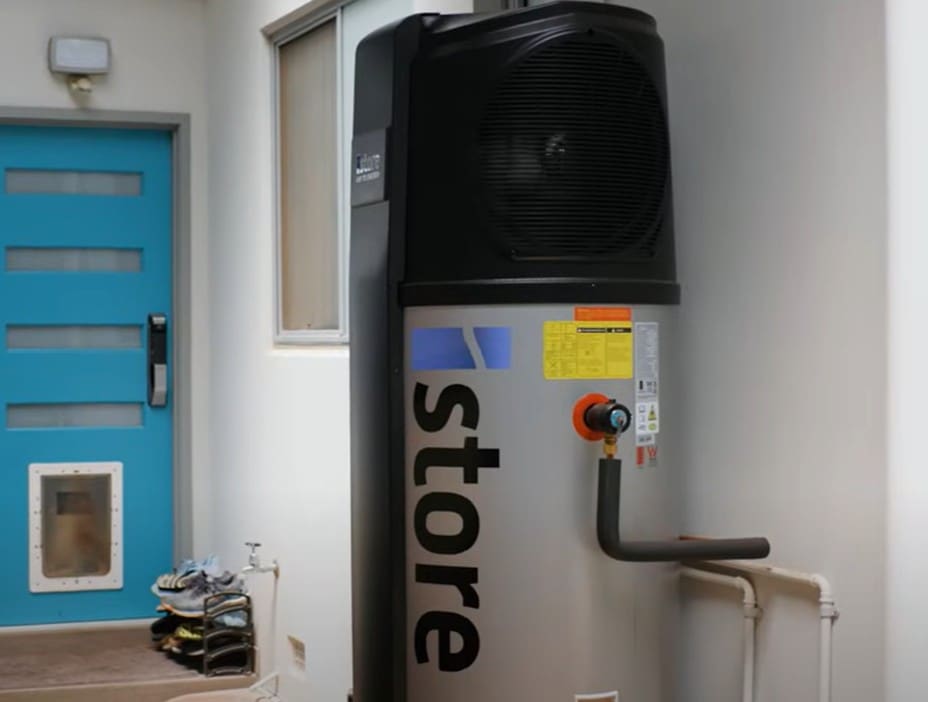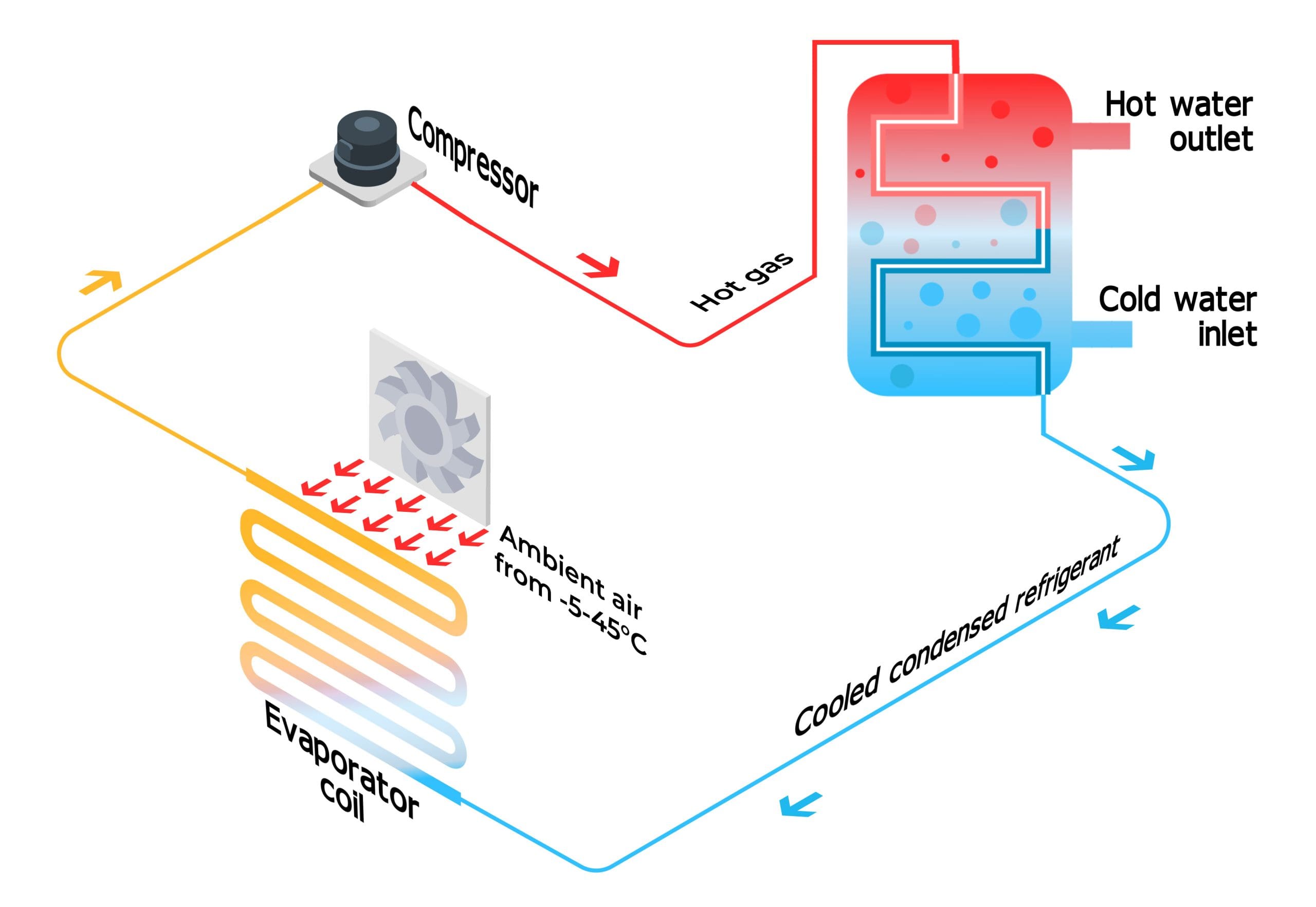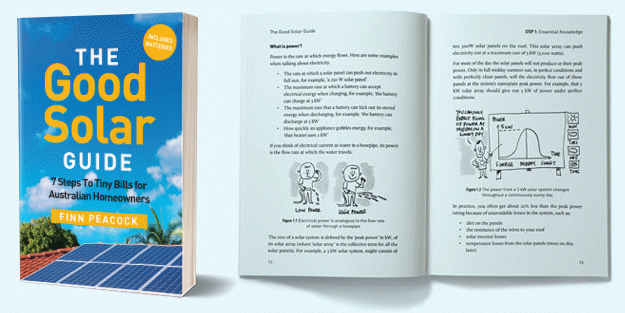 When it comes to heat pump hot water units, one of the most important decisions you’ll make is choosing a tank big enough for your needs. As I’ve heard one commentator put it, “no one likes being left cold, wet and naked.”
When it comes to heat pump hot water units, one of the most important decisions you’ll make is choosing a tank big enough for your needs. As I’ve heard one commentator put it, “no one likes being left cold, wet and naked.”
Why Does Hot Water Heat Pump Tank Size Matter?
The size of your heat pump determines whether you have enough hot water for your household’s needs, how efficiently the system runs and the upfront cost.
Heat Pumps Take Their Time
A heat pump hot water system works by absorbing warmth from the air and transferring it into your water. The process is highly efficient and is the main reason we love heat pumps – they are incredibly cheap to run. But the process is slower than traditional electric or gas hot water systems, so it’s important to store enough hot water to cover your needs.
If you undersize your tank, you run the risk of running out of hot water before the end of the day. Oversize it, and while you’ll pay more upfront, you’ll have the peace of mind that there’s always enough supply, even when guests come to stay or your household grows. The key is understanding how your household uses hot water.
How Long Are Your Showers?
The single most important factor in determining the size of your heat pump is how your household uses hot water – particularly how much you use each day. And generally that comes back to the length of your showers.
For example, I have a 225-litre heat pump that serves my family of four (me, my wife and two kids). We often have grandmas staying to look after my younger daughter, so sometimes we have five in the household.
On the other hand, in my work at Powrhouse, our team has installed 270-litre units for two-person homes. One customer in particular made it very clear to me that she and her partner would once a month have 20 minute plus showers each and they had zero tolerance for running out of hot water.
Teenagers deserve special mention here: I’ve had plenty of customers note their teens love a long shower, so bear that in mind when calculating current or future needs.
So above all else, ask yourself: how long are your showers?
Other Key Considerations
There are a range of other details to factor in:
- How many people live in your home: each person typically uses about 50 litres of hot water per day.
- How many bedrooms are in your home: more bedrooms leads to potentially more residents.
- How often you host guests: regular guests will lead to increased usage
- The age of your appliances: modern appliances tend to heat the water in the appliance, old appliances tend to draw hot water.
Rules of Thumb for Tank Sizing
Applying the 50L per person per day rule of thumb:
- A couple might need a 150-200 litre tank.
- A family of four would be better off with a 250-300 litre tank.
- Larger households of five or more should look at 315-400 litre tanks.
- For most manufacturers, the 260-270 litre size is their most commonly sold unit.

An iStore hot water heat pump with 270 litres of capacity.
Why Your Old Tank Size Doesn’t Matter
Many homeowners look at their old electric or gas hot water system as a reference point when buying a new heat pump. But the reality is that it’s not a good comparison. There are two reasons.
First, traditional electric and gas units heat water much faster. Electric systems recover at around 3 litres per minute and gas systems even quicker at 4 litres per minute. Mid-market heat pumps tend to only recover at around 1 litre per minute (2 litres per minute for premium units). My family once stayed in an apartment on holidays that had a small 50 litre electric system. The water would be cold once the bath was full for the kids, but was fine for the next shower as long as it wasn’t immediately after the bath.
Secondly, it doesn’t matter when gas units reheat the water – the gas price is the same throughout the day. This is not the case with heat pumps – we want to run them during the middle of the day, both so they are run by cheap solar and because there is more heat in the air.
When and How Heat Pumps Run
I am a big advocate for setting up a heat pump to run on a timer during the middle of the day, during what I call the “Optimum Heating Window.” In most cases this will be between 10am and 4pm. This window lines up with the warmest part of the day and, importantly, with the availability of cheap renewable electricity, both in the grid and if you have solar.
By heating just once per day and storing enough hot water to last until the next cycle, you get the best efficiency and lowest running costs.
But because the unit is running on one heat cycle per day, for the other 18 hours a day it’s not running. So if you run out, you’re out until the cycle starts the next day.
Ideally we want to choose a heat pump that will be run for one cycle per day, but the settings can be changed if you find you’re running out.
Downsides of Oversizing
The main downside is higher upfront cost. A 400-litre tank will cost more to buy and install than a 250-litre tank. However, the good news is that because heat pumps are so efficient, the difference in running costs between a larger and smaller unit is minimal. Unlike old-style electric systems, where heating a half-full oversized tank could waste a lot of energy, heat pumps use far less electricity overall. While you may spend a little more upfront, you won’t be hit with significantly higher ongoing costs.
This makes oversizing a relatively low-risk option: especially if you anticipate your household growing or you simply like the comfort of having more hot water available.
Downsides of Undersizing
If we install a unit that’s too small, there are levers we can pull.
We can increase the running time so the unit runs for longer and there’s a chance to reheat water used during the day. We can also run a boost cycle in the morning to heat for morning showers.
In some cases we can also change the settings to use a backup element to heat the water to a higher target temperature, but we’d only recommend that as a last resort or if the owners have excess solar during these periods.
But it’s clear the risks of undersizing are greater than the risks of oversizing – no one likes their shower to be cut short!

A diagram illustrating how a heat pump hot water system works.
Manufacturer Nuances
The last factor to take into account is the nuances of different sized units from different manufacturers. Let’s run through a few examples:
- Reclaim – by far the most common size for Reclaims is their 315 litre tanks. They also sell 160, 250 and 400-litre tanks, but the difference in tank price is generally only around $100-$300. This isn’t a huge difference, especially when we consider the total system price varies between $5,000 and $7,500.
- iStore – heat pumps come in 180 and 270-litre sizes. But while the tank size price difference is around $300, government incentives can change that: for instance the fully installed price in Victoria is only $150 because the larger tank size attracts more in VEEC rebates.
- Aquatech – currently come in 225 and 270 litre sizes, with a $400 price difference. On an installation price of say $1,500 to $2,000, the $400 price difference is meaningful.
Key Takeaways
When it comes to sizing a heat pump hot water tank, the goal is to balance efficiency, upfront cost and your household’s needs. Here’s a summary of what I’ve covered here:
- Base your choice on usage, not your old tank. Heat pumps heat slower, so they need more stored hot water.
- Use the 50 litres per person rule. Adjust up if your lifestyle means heavier hot water use.
- Think ahead. Consider the number of bedrooms and possible future occupants.
- Run the system once per day. Ideally between 10am and 4pm for maximum efficiency.
- No one ever complained of having too much hot water! If in doubt, it’s probably best to go bigger.
Get The Size Right For Peace Of Mind
Choosing the right size heat pump hot water tank is all about planning for how your household lives today and how it might live tomorrow.
If you get the size right, you’ll enjoy a reliable supply of hot water every day, lower energy bills, and the peace of mind that comes with a highly efficient system. If in doubt, lean towards a slightly larger tank. It’s a small upfront investment that can save you from cold showers and give you greater flexibility for years to come.
For more on the tank size of popular brands and how long they take to refill, take a look at SolarQuotes’ heat pump brand comparison table.

 RSS - Posts
RSS - Posts



Some helpful basics here. Thanks.
Am still wondering about legionella cycles though. Have read conflicting opinions. Ranging from always storing water above 65 degrees to there being no/minimal risk in most situations, sometimes with a caveat that you regularly – as in weekly – replace the tank water. And a lot of ideas about adopting something between both extremes.
Any views.
The standard requires that 90% of the tank volume is heated to 60deg for 90 mins weekly.
An iStore set temp is 62degC and hence will meet this requirement daily in normal use.
It does not use the element to achieve this.
I work for iStore
How long do these heat pump tanks last in real world usage examples, I’ve found anything with a tank inevitably rusts out and needs ongoing maintenance. I’m in Melbourne.
I replaced an old tank which was 30 years old with a heat pump. The bottom of the old tank was left on the floor when the rest was removed. The Heatpump system lasted to the end of the 5 year warranty and little more – I would avoid an integrated system if that is still an option.
Old thermal element tanks were not insulated whilst new ones are insulated and generally last 10 to 15 years.
What about houses where the hot water is still on a specific hot water heating tariff switched by the power company?.
Given you state they do heat slower, will the amount of hours the power company supplies power for hot water at night, be sufficient to run say a 300l heat pump?
Thanks Andrew, I’m interested in this too. But from the perspective that we’re moving away from the old controlled load (overnight) system and gradually adopting off peak (daytime) instead.
As coal fired power with its need for overnight consumers declines, the new off peak is designed for consumers using power during peak solar generation. So we appear to be transitioning from overnight consumption to midday/afternoon.
I’ve been wrestling with how best to move from controlled load to off peak. Should it be gradual or sudden? There are advantages and difficulties with either approach.
Decision may become easier when everyone has (been compulsorily) converted to Smart Meters, but am a bit conflicted about what to do between now and 30 November 2030.
As Solar Quotes is now part of. Origin Energy perhaps you could explain why Origin decline requests to move my controlled load hot water times to day hours to take advantage of excess solar for they pay virtually nothing and I can’t use. ??
Hi Rod – we are an independent business unit and can’t speak to Origin policies but that does sounds frustrating. A guide to getting one’s energy retailer to move controlled load to day hours might be something we look at one day.
i have a smart meter, but still on controlled loa and single flat rate for normal power.
The controlled tariff typically lasts for 6 hours – midnight to 6am.
That’s more than long enough for a heat pump to work, even with lower overnight air temperatures.
However there is likely to be a noise issue – as quiet as they are they’ll still be a problem for neighbours if it’s running at night, and you may not be allowed to do that.
cheers, I’m on acreage, so noise wouldn’t be an issue.
Dale: – “That’s more than long enough for a heat pump to work, even with lower overnight air temperatures.”
I’d suggest that’s the least energy efficient time to run the heat pump hot water unit. Also, the coldest temperatures where I live are typically just after sunrise. In winter, the ambient temperatures can still be below freezing, just when power is required for the anti-freeze run cycle for my Sanden unit.
For colder climates, some heat pumps on interrupted circuits are not recommended.
https://www.solarquotes.com.au/blog/hot-water-heat-pump-savings-are-all-in-the-timing/#comment-1727293
Dale: – “However there is likely to be a noise issue – as quiet as they are they’ll still be a problem for neighbours if it’s running at night, and you may not be allowed to do that.”
The Sanden unit is rated at 37 dB (at 1 m distance from the outdoor unit). I’d suggest most air conditioners are rated at around 60 dB.
I have a 270 litre heat pump installed. Due to the low hot water useage the HWHP only operates every second day. Higher use most likely every day.
Results over 12 month period.
Up to 3h 15min in Victorian winter.
Up to 1h 30min in Victorian summer
Consumption less than 1 kw per hr
thank you David!
Tim one major mistake in your article, Reclaim/ Sanden rate their heatpumps at 32.45degC
Everyone else rates their heatpumps at 20degC.
If I rate the iStore at 32.45 deg it too gets 110l/ hr recovery without the booster.
Sanden claims 4.99kW heating power at 32.45 and at that temp an Istore gets 5.05kW.
This is heating and entire tank volume from 15-60degC
Can’t wait for the MEPS heatpump rating standards to be implemented so that the field can be leveled and misleading marketing removed.
For ref – according to the BOM Melbourne has just 11-16days a year over 32DegC hence quoting performance in those conditions is unrealistic.
I work for iStore
Hi Karl, the analysis behind that graphic came from SolarQuotes not Tim – I’ve removed while we look into your claim.
Karl: – “Can’t wait for the MEPS heatpump rating standards to be implemented so that the field can be leveled and misleading marketing removed.”
I agree. I’d suggest in any marketing claims for energy efficiency performance, includes a table showing for a range of outside ambient air temperatures (say for -10, 0, +10, +20, +30, & perhaps +40 °C), includes the respective corresponding CoPs, Input Electrical Power (kW), Output Thermal Capacity (kW), and perhaps hot water flow rates (litres/hour) should be mandatorily displayed to allow for fair product comparisons.
CoP depends on a number of factors including primarily the refrigerant used & the ambient air temperature.
https://www.solarquotes.com.au/blog/heat-pumps-win-the-hot-water-efficiency-war/#comment-1727052
I’d also like any marketing material to state performance with a range of water input temperature. Here in Orange, the cold water can be referigerator temperature during winter.
I still CANNOT accept that (noisy) heat pumps consuming an appreciable amount of electricity are better than a no noise, GOOD QUALITY, SOLAR, EVACUATED TUBE on the roof, Insulated Tank on the ground Solar System, that uses a minimal amount of electricity to run the control system and the approx 30Watt tiny circulating water pump.
YES you still have to SIZE the system properly for your family/house needs.
We’ve used such a solar hot water system on 2 homes over the last 10 years and never use the electrical element boost! Go Solar.
We consume only a tiny amount of electricity and get free heating from the Sun, even in the Melbourne winter!
Lyn, those of us who’ve never tried thermal solar usually only think of the cheaper flat plate collectors, which aren’t a patch on evacuated tube, it seems. Evacuated tube was rather pricey, last time I looked, so filling that roof area with PV panels to feed a silent resistive element won out here. (The whole roof can then boost the HWS in low insolation, and the PV in the notional water heating roof corner can power other stuff after the water’s hot – i.e. it’s more opportunistically flexible – very handy off-grid.)
Some years back, the editor of “Owner Builder” magazine told me that their evacuated tubes didn’t provide enough hot water for the two of them in winter, down in the You Yangs. But number of tubes, tree shading, early sunset behind the mountains, etc. are all unknown variables there. I guess that a boost element fixes undersize issues on any system, given grid power or a big off-grid battery, as here. It’s good to have a plan B, especially for visitors.
This article is silent on the single most important thing that affects the useable volume of hot water available for a household from a hot water system, being the shower head.
For anyone who spends any time doing an in depth analysis to understand hot water use and tank sizing, they would surely be well aware of the Methven Kiri Satinjet Ultra Low Flow shower head, delivering 4.5 or 5 litres per minute, whereas most “low flow” shower heads will deliver double that flow rate. Do the bucket test to find out what your shower head delivers.
It’s very clear that most households are installing or retaining inefficient shower heads and/or oversizing their hot water tanks.
It’s possible to take things too far. I recently installed a new shower head rated at 9L/min from memory. Our lowish water pressure and/or skinny pipes results in an okay but not great experience. Halving the nominal flow sounds unlikely to impress certain family members. It brings to mind caravan parks in the 1980s where your feet would still be cold no matter how long you stood under the mist-blower shower head. That definitely discouraged overly long showers!
I would definitely agree that many modern shower heads are badly designed or implemented; if it’s only possible to stand under half the spray then you’ve got a massive inefficiency right there.
In a similar vein, notice that we are now encumbered with kitchen taps that are barely capable of rinsing plates, and totally unable to melt off kitchen fat. The chase for impressive headline efficiency numbers has resulted in questionable savings combined with a definite reduction in utility.
Hi Alex,
I’ve boutght one of these Methven shower heads and it’s great.
If you water isn’t hot enough it’s likely because the Australian building industry is too slack to have divided up your hot water feed. Bathrooms should be tempered for safety but other areas are allowed to have hot water coming straight from the tank at full temperature.
What about home energy management systems acting as bridge between solar panels and the electric hot water unit ( NOT a heat pump), drawing on free solar or off peak elec, depending on when the hot water is demanded, possibly using a mchine learning set up???
Great idea… you’ll have power company executives breaking out into cold sweats. Victoria has had compulsory smart metres for 10 or more years and no
innovations such as moving ” off peak ” have been pushed by the industry. Reasons obvious. Again as Solar Quotes are now part of the industry, drive some innovation from within that doesn’t always require massive
outlays from battling consumers
Absolutely – a Catch Relay is a simple and inexpensive way to align hot water heating with excess solar, with the optional off-peak ‘top-up’ overnight if the tank hasn’t been on for a sufficient time. Particulary relevant for conventional HWS where the load is greater than for a heat pump.
In this case – it is important to consider the power rating of the hot water system. Depending upon the capacity of panels and inverter, and the solar peak solar and duration available during winter, sizing of the element becomes important – it may suit the solar profile better to pick a lower power element (2.4kW) if solar is available to run for longer during the day. If however, you have enough solar to exceed 3.6kW most days, then a higher power element may be appropriate to ensure.
Diverters like Green Catch or SunStash are also an option to divert even small amounts of excess solar, if meeting the full load of the hot water element is difficult with the solar system installed.
I have a 250 litre tank with an immersion heater (rated at 3.6kW) and timer to limit power use between 12:10pm and 3:00pm. It tank faces the sun for 8 to 16hours most days. Electricity use is between 3kW in summer and up to 7kW max in cold winter days.
I have no Solar or battery but net result is electricity costs $0.23 to $0.53 a day at rhe most for hot water. No appliances have hot water connection which seems to be default these days. $1000 for tank and $146 annual heating bill for family of 2 plus 2 to 4 intinerant offspring.
Compared to the old heat pump it would need to last 35 years to catch up, whilst it lasted 5 years warranty plus 3 months to crash.
Are there still rebates for heat pump hot water heaters in NSW.
I am wondering if you have excess solar panels would the extra up front cost of a heat pump be offset by lower energy requirements cf a conventional electric storage system.
Heat Pump Hot Water systems are more efficient than conventional elecric hot water systems. As they exchange heat compared to manufacturing heat
HPHWS – HP exchange heat from 1:2 to 1:4 depending on air temperature.
Conventional Hot Water tank – 1:1
HPHWS consumes 700 to 800 watts operating
Conventional Hot Water Tank 2400w to 3600w operating
Over to you to calculate the remaining
Something I never thought of prior to installing a HPHWS on a hot day. It cools the air.
With 27 kW of PV here, I find just the opposite. Ample free solar energy, even in winter, means the extra heatpump efficiency would only slightly reduce the off-grid battery cycle rate – and it’ll probably outlast me at the current rate.
I did have the HWS element reduced from 3.6 to 2.4 kW on installation. That is a cheaper way to reduce battery cycling on very cloudy days. (No teenagers here.)
So it probably depends on how much solar-suitable roof space is to hand. Not enough, then less panels (parrtially) funds the heatpump needed to make up. (Another argument against a crinkle-cut floorplan and an origami roof, I guess.)
Mike: – “I am wondering if you have excess solar panels would the extra up front cost of a heat pump be offset by lower energy requirements cf a conventional electric storage system.”
Yep. Immersive electric hot water systems typically have elements rated at 3.6 to 4.8 kW. Heat pump hot water systems typically draw significantly less power.
Sanden units draw up to 2.3 kW at the lowest operating outdoor air temperature (-10 °C) but less than 1 kW at higher outdoor air temperatures – see the table of performance in my comment here:
https://www.solarquotes.com.au/blog/heat-pumps-win-the-hot-water-efficiency-war/#comment-1727052
Depending on hot water consumption & ambient air conditions my Sanden 250 litre stainless steel tank system unit requires typically:
– in summer, the reheat run-time varies from about 1½ to 2¾ hours, and
– in winter, from about 2¾ to 4 hours, to recharge the tank once per day.
Are you asking “ is it better to use low capital cost, and long lasting, quiet and location agnostic, resistive electric tank,….instead of a shorter life and much more expensive heat pump,…and use the money that you would save to buy more cheap (25 year reliable) pv panels to make up the extra energy for the restive element tank”?
The answer is yes for most people,especially when we can utilise the larger pv system to offset buying electricity at 50c per kWh during peak times and use that extra surplus power during the middle of the day instead of selling it at 2 c (or being curtailed to nothing).
The significant discrepancy in buy and sell price puts huge value on generating more electricity in morning and afternoon when most homes need more electricity, instead of paying premium prices and giving our own power to retailers for a pittance.
Tim Chirgwin: – “The answer is yes for most people,especially when we can utilise the larger pv system to offset buying electricity at 50c per kWh during peak times…”
I think you are assuming:
* most people have substantial areas of unobstructed/unshaded suitable spaces for facilitating large energy collecting PV-arrays;
* most people won’t need other high energy demand appliances competing for limited energy produced by the PV-arrays, like a battery energy storage system, electric cooktops/ovens, air conditioner systems, and BEV home charging;
* larger capacity (and more expensive) inverters last as long as the operating life of a large-scale array of solar panels.
The cheapest energy is the energy you don’t need.
Geoff, I understand what you are saying about not using energy being cheapest, but we have to understand that free sunshine can be converted cheaply to utilise for any purpose, and the difficulty we have is obtaining enough energy in high demand times (typically low sun for pv owners), while utilising energy hungry appliances during low demand and high energy supply times (middle of day). The resistive hot water storage tank suits this beautifully, and we already have grid surplus in the middle of the day and curtailment of solar farms etc is usual already, and opportunity is utterly wasted due to this. Utilising more electricity in the middle of the day is a solution, not a problem as you surmise.
If we were all concerned to live as energy limiting as possible then we would build smaller houses with less glass, yet average Australians are building nearly the biggest houses in the world with low occupancy rates.
Cheap reliable resistive hot water tanks combined with more PV is a plus
When the heat pump is being supplied by solar panels during the day, how long will the heat in an Istore pump keep the heat for the next morning 7am shower period. Assuming no water is used for hand dishwashing in the evening? Is there a fallback to the grid capabilities if needed?
To align heating with excess solar more accurately than simple timer, and to provide the o’night backup that you mention, check out the Catch Relay.
Working a treat for me on a new solar install (Christchurch, NZ, on a 6.3KW panel/5kW inverter solar system that sometimes only just gets over the 3kW threshold to fully power my HWS in winter months).
A hot water tank of 250l will typically loose 1 to 2 kwh of heat daily (standing loss) without any draw off of hot water.
We shower at night and the night tariff heats from 1am to about 3:30am and we can get 2 showers plus hand washing and dish washing for 2 days with the hot water switched off, but the third day wants ti be quick showers.
Hi The hype about heat pumps astounds me,the continuous flow gas hot water system wins by a country mile in my humble opinion. Regards Hans
Hi Hans,
All electric houses are simply cheaper to run, and aside from which, we’ve known from at least 1963, we can’t keep burning fossils.
Yep, it’s all about the profit these days, almost everything designed to fail… makes you wonder how these companies survived before China came into the picture!
With east coast gas supplies dwindling drastically over the next few years, gas prices will begin to hurt. Government subsidy schemes to move consumers off gas will cause further gas price pain as all costs fall to the remnant tail draggers. And then the gaspipe network will rapidly shrink as maintenance cost makes it unviable. ((Not enough corporate profit.)
But fear not. Lotsa panels (roof area permitting) and a resistive element are even lower maintenance than a dinosaur-fart burner, cheaper to buy, and much cheaper to run. (But are aircons also too frail to have? HWS heatpumps merely water-condense rather than air.)
Denmark’s postal service ceases letter delivery at year’s end – after 400 years. It’s hard to have a bullock wagon built these days. Obsolete tech goes under as its utility fails. (Look at pyramids. And they don’t pollute as much as fossil gas burning)
Methane leaks are a massive problem. Fix ’em now, or shut down the industry as soon as feasible, would be best.
In SA the 10-3 ‘solar’ or Shoulder tarrif time is also available with Controlled Load with the associated saving about 5c/kwh. Main issue is having to get old legacy time switch changed when going to Time Of Use.
Jon